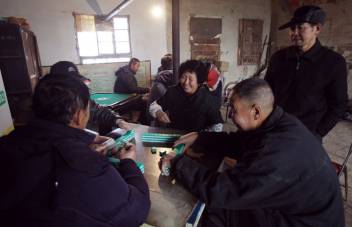 Ageing as a policy issue is becoming of increasing importance in the world’s most populous country, China.
Ageing as a policy issue is becoming of increasing importance in the world’s most populous country, China.
There are currently 194 million people over the age of 60 in China and this number is predicted to increase to 440 million by 2050.
The roots of population ageing are similar in China to other countries, including falling fertility rates and increasing life expectancy. However, China is also facing the consequences of its uniquely strict family planning policies and massive rural to urban migration of the working adult population.
New report surveys thousands across China
Newly published research shows that although recent government efforts to expand social pensions and health insurance is reaching millions, there is still much to be done.
The report Challenges of Population Aging in China: Evidence from the National Baseline Survey of the China Health and Retirement Longitudinal Study (CHARLS) summarises the key findings of a survey conducted between 2011 and 2012 of 17,708 individuals across the country.
The data throws up some shocking statistics:
- 24% older people reported having difficulty completing basic daily activities on their own
- 40% displayed high levels of depressive symptoms,
- physical examinations revealed that 54% of older people had hypertension.
This means that 44 million older people need assistance with basic daily activities, 74 million with depressive symptoms and almost 100 million have hypertension.
Although over 90% of older people reported having some form of health insurance, out of pocket expenditure is still high. Indeed, 22.9% or 42.4 million of China’s older people have consumption per capita levels below the poverty line.
Family support still crucial to older Chinese
In China, as in other countries, family support is still the major welfare provider for older people. The study found that 89% of older people who need assistance with daily activities do receive help from family members, although this still leaves 5 million older people who require daily assistance not receiving any support from family members.
HelpAge’s work in rural western China with the China National Committee on Ageing (CNCA) and Shaanxi Provincial Committee on Ageing, aims to find solutions to these challenges. There are over 400,000 older people’s associations in China, the majority of whom are inactive and exist in name only.
HelpAge and its partners are working to demonstrate how these associations can be mobilised by older people to provide services to improve the wellbeing of older people.
Mobilising older people’s associations
This can be done in a number of ways, including providing: volunteer homecare schemes, health education and monitoring, micro-credit schemes, information on their rights and entitlements.
These associations also have a role to play in providing social activity in communities. As part of its twelfth Five Year Strategy, CNCA has the ambitious target of covering 95% of communities in urban areas and 80% of communities in rural areas within the next set up of older people’s associations.
Although the challenges facing China’s ageing population are huge, there are means, such as older people’s associations, to support older people in helping themselves and their communities.
Find out more about our work to support older people in China.
